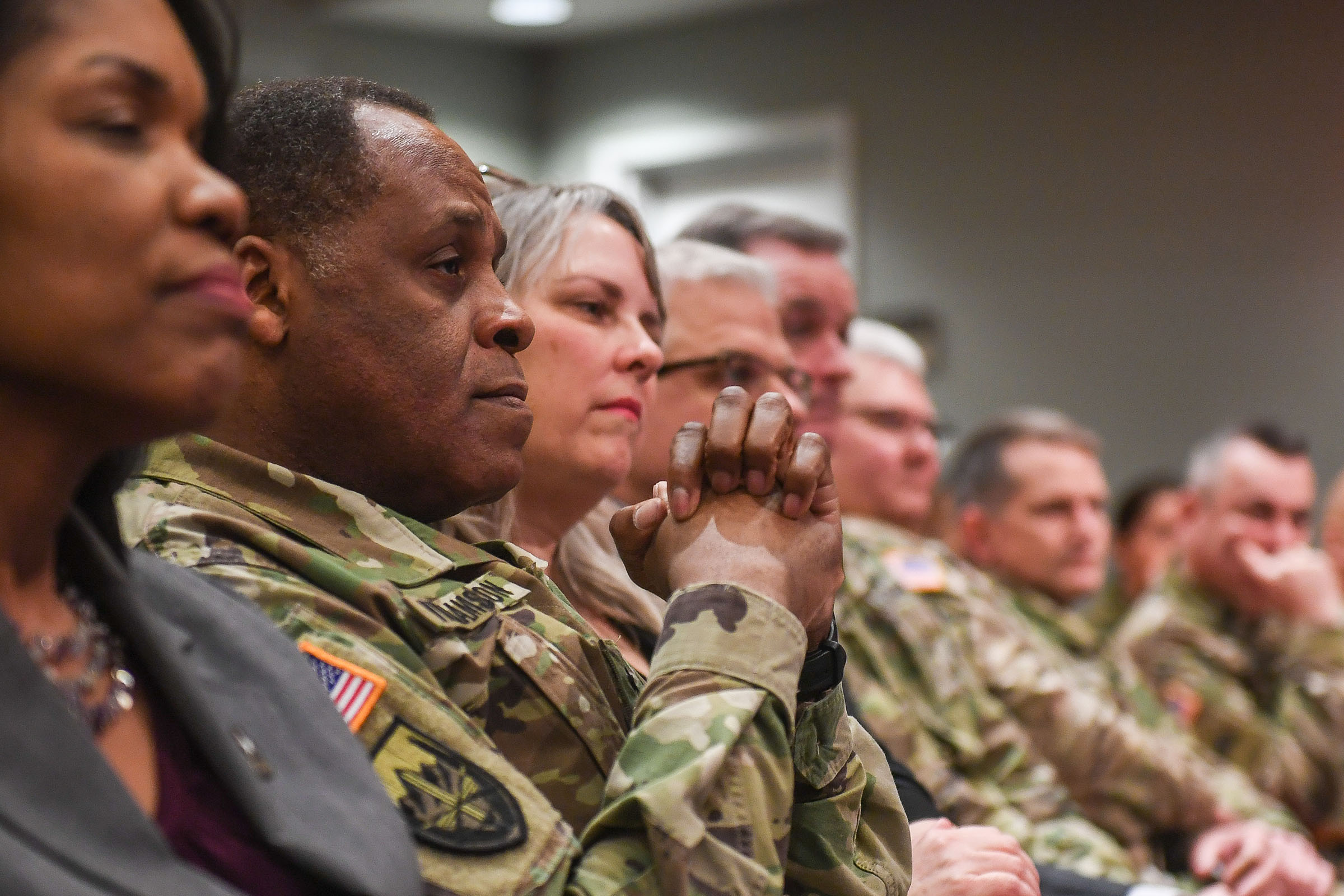
By Tara Clements
Just before his retirement in March, we had the opportunity to sit down with Lt. Gen. Michael E. Williamson and capture some of his reflections after more than 34 years of military service, the last three as the principal military deputy to the assistant secretary of the Army for acquisition, logistics and technology, director acquisition career management (DACM) and director of the Army Acquisition Corps.
“I think we have a tremendous workforce. I’m convinced that all of our success for delivering programs is tied to people,” said Williamson, emphasizing that it’s all been done during 15 years of continuous war. It’s difficult for people to understand the contributions acquisition professionals have made, he said. “The acquisition guys … they just keep delivering. That’s a really, really big deal,” he said. “Go back to Korea, Vietnam, World War II—just do the math. We have not had a sustained war like this.”
When asked about the stress that budget can place on the workforce, Williamson shared that it’s more of an issue of where those dollars go. “We have a prioritization problem—we have a scale and a scope problem,” he said. But “when the Army wants us to build something or buy something, they’ll find the money. If they don’t, it’s obviously not important to them. Don’t fret about it.”
He was quick to point out that money is a factor, however. “I shouldn’t say I don’t worry about money. I worry about money applying to the things that we’re supposed to do, but I don’t sit around all day going, I wonder if I’m going to get this money or not? If they don’t give me the money, I don’t build it.”

A Legacy of Development
Noteworthy accomplishments during Williamson’s acquisition career include implementation of the Army Acquisition Leader Preparation Course, a centralized selection board for civilian product and project directors and implementing the AAW Human Capital Strategic Plan. “Our workforce is our strength,” he said. (Photo by Michelle Strother, U.S. Army Acquisition Support Center)
As the Army’s top acquisition officer, Williamson’s legacy includes several achievements that have enhanced the Army Acquisition Workforce (AAW) including establishing a centralized selection board for civilian product and project directors; implementing the AAW Human Capital Strategic Plan, a five-year strategy for AAW readiness; and creating the Army Acquisition Leader Preparation Course for centralized selection list selectees preparing for leadership roles in a contracting command or as program managers.
While there have been a few specific focus areas during his tenure, Williamson noted the importance of looking at the workforce holistically.
“You can’t just target one piece. You have to make sure that you’re looking at the entire enterprise, because what will happen to us if we’ve had these movements where we brought in lots of young [people] and we’ve forgotten about all those people who need to make the next jump to being senior leaders?”
And this doesn’t just relate to the Army DACM’s role.
“Any human capital plan has to address the totality of the workforce because if not, at some point the organization is going to die. … So we’ve got to bring new people in. We’ve got to create opportunities for people within the organization to leave and be exposed to other things and then have a way to come back in.”
Williamson added that there’s no single program or initiative that makes our workforce better or is more important than the other: “It’s the combination of all of these things.”

‘Nothing Short of Amazing’
At a retirement ceremony at the Pentagon, Steffanie Easter, acting ASA(ALT), praised Williamson’s accomplishments. “When you think of what he’s done for ASA(ALT) and the acquisition community and the Army, it’s nothing short of amazing,” Easter said. “Your leadership has been strong, it’s been ethical, and done with the utmost character.” (U.S. Army photo by Sgt. Ricky Bowden/Released)
There are two things Williamson would change.
“I think we’ve got to do supervisory training earlier on with our folks,” said Williamson. “Somehow we wait until somebody is going into being a PM or a log manager, and then say ‘now we need to teach you how to be a supervisor.’ Those are things that you should be learning and building upon all the way through.”
Second, Williamson stressed the value of learning from each other, and not relying solely on email to get the job done: “Get up and walk around. You’ve got to call people on the phone. You’ve got to look people in their eyes and find out what’s going on. I’m convinced that even though our workforce is our strength, I think our weakness is that we don’t talk to each other.”
As his career comes to an end, when asked what he’s most proud of, it comes down to people for Williamson.
“For more than 15 years we’ve been in a fight, and our folks continue to deliver. And the budgets have gone up and gone down, but we’re still delivering capability. It’s not whether we built this or did this on this schedule. It’s the fact that we have sustained our nation’s warriors in a fight for 15 years nonstop. That’s a really big deal.”
Subscribe to Army AL&T News, the premier online news source for the Acquisition, Logistics, and Technology (AL&T) Workforce.







